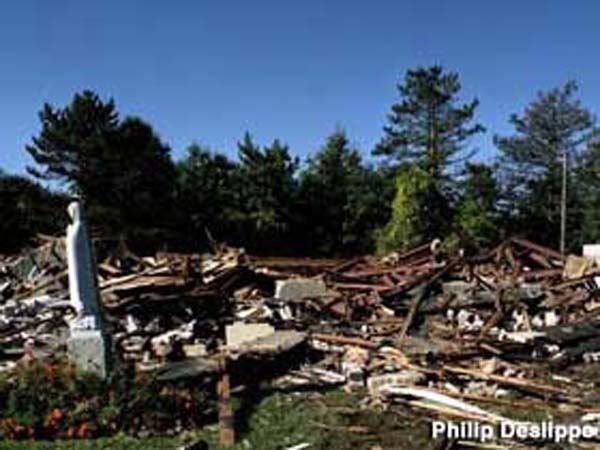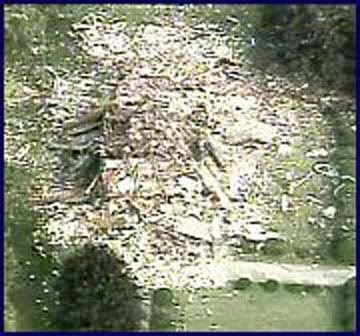What does your Coleman Stove say about using it indoors?
CARBON MONOXIDE HAZARD
• This appliance can produce
carbon monoxide which has
no odor.
• Using it in an enclosed space
can kill you.
•
Never use this appliance in an
enclosed space such as a camper,
tent, car or
home.
• EXPLOSION - FIRE HAZARD
• Never store propane near high heat, open flames, pilot lights, direct
sunlight, other ignition sources or where temperatures exceed 120
degrees F (49°C).
• Propane is heavier than air and can accumulate in low places. If you
smell gas, leave the area immediately.
• Never install or remove propane tank while outdoor stove is lighted,
near flame, pilot lights, other ignition sources or while outdoor stove is
hot to touch.
• During operation, this product can be a source of ignition. Never use
the stove in spaces that contain or may contain volatile or airborne combustibles,
or products such as gasoline, solvents, paint thinner, dust
particles or unknown chemicals.
Minimum clearances from combustible
materials: 12 inches from the sides & 48 inches from the top.
• Provide adequate clearances around air openings into the combustion
chamber.
Not for home or recreational vehicle use.
WARNING
We cannot foresee every use which may be made of our products.
Check with your local fire safety authority if you have questions
about use.
Other standards govern the use of fuel gases and heat producing
products for specific uses.Your local authorities can advise you about these.
• Never refill disposable cylinders.
• Use the preset regulator that came with the stove. Do not attempt to
adjust.
• CARBON MONOXIDE HAZARD
• This stove is a combustion appliance. All combustion appliances produce
carbon monoxide (CO) during the combustion process. This product is
designed to produce extremely minute, non-hazardous amounts of CO if
used and maintained in accordance with all warnings and instructions. Do
not block air flow into or out of the stove.
• Carbon Monoxide (CO) poisoning produces flu-like symptoms, watery
eyes, headaches, dizziness, fatigue and possibly death.You can't see it and
you can't smell it. It's an invisible killer. If these symptoms are present
during operation of this product get fresh air immediately!
• For outdoor use only.
• Never use inside house, camper, tent, vehicle or other unventilated or
enclosed areas. This stove consumes air (oxygen). Do not use in unventilated
or enclosed areas to avoid endangering your life.
• SERVICE SAFETY
• Keep all connections and fittings clean. Inspect propane cylinder and
stove propane connections for damage before attaching.
• During set up, check all connections and fittings for leaks using
soapy water. Never use a flame. Bubbles indicate a leak. Check that
the connection is not cross-threaded and that it is tight. Perform
another leak check. If there is still a leak, remove the cylinder and
contact Coleman for service or repairs.
• Use as a cooking appliance only. Never alter in any way or use with
any device or part not specifically designed and sold for this product.
• Clean stove frequently to avoid grease accumulation and possible
grease fires.
http://www.coleman.com/coleman/images/pdf/2000000117.pdf
You may want to rethink your plan...
If you want I can provide you pictures of a smoldering pile of tooth pics that once was a church where someone temporarily set up propane stoves so they could cook food for some special event they were having...







